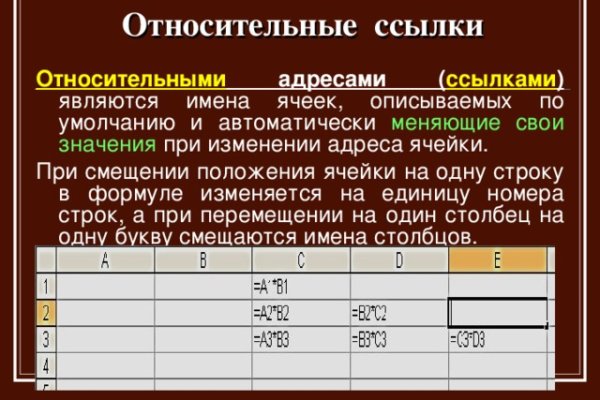Kraken dark 2krnk biz

Aquest lloc web utilitzacookies per recopilar informació estadística кракене sobre la navegaciódels usuaris i millorar els seus serveis amb les sevespreferències, generades a partir de les vostres pautes denavegació. Podeu consultar la seva configuració a la nostraPolíticade Cookies.Acceptar © 2002-22 Fundació kraken Ensenyament i Família | Tel.933876199Avíslegal | Política decookies
Kraken dark 2krnk biz - Кракен телеграм каналы
to forecast change. The Landscape Toolbox is a coordinated system of tools and methods for implementing land health monitoring and integrating monitoring data into management decision-making.The goal of the Landscape Toolbox is to provide the tools, resources, and training to land health monitoring methods and technologies for answering land management questions at different scales.Nelson Stauffer Uncategorized 0The core methods described in the Monitoring Manual for Grassland, Shrubland, and Savanna Ecosystems are intended for multiple use. Each method collects data that can be used to calculate multiple indicators and those indicators have broad applicability. Two of the vegetative methods, canopy gap and vegetation height, have direct application…Continue readingNelson Stauffer Uncategorized 0Quality Assurance (QA) and Quality Control (QC) are both critical to data quality in ecological research and both are often misunderstood or underutilized. QA is a set of proactive processes and procedures which prevent errors from entering a data set, e.g., training, written data collection protocols, standardized data entry formats,…Continue readingNelson Stauffer Uncategorized 0In order to meet its monitoring and information needs, the Bureau of Land Management is making use of its Assessment, Inventory, and Monitoring strategy (AIM). While taking advantage of the tools and approaches available on the Landscape Toolbox, there are additional implementation requirements concerning the particulars of sample design, data…Continue readingNelson Stauffer Methods Guide, Monitoring Manual, Training 0We’ve added two new videos demonstrating and explaining the Core Methods of Plant species inventory and Vegetation height to our collection. These are two methods that previously didn’t have reference videos, although the rules and procedures for both can be found in volume I of the Monitoring Manual for Grassland, Shrubland,…Continue readingSarah McCord Methods Guide, Monitoring Manual, Training 0Question: Are succulents counted as a woody species when measuring vegetation heights? Answer: Yes. Succulent plant species are considered to be woody in contrast to herbaceous because their function is more similar to woody vegetation than herbaceous vegetation in many applications of these data. From a wildlife viewpoint: Some succulents are…Continue readingNelson Stauffer Blog, News, Presentations 0The 68th annual Society for Range Management meeting held in the first week of February 2015 in Sacramento, California was a success for the Bureau of Land Management’s Assessment, Inventory, and Monitoring (AIM) strategy. Staff from the BLM’s National Operations Center and the USDA-ARS Jornada hosted a day-long symposium to…Continue readingJason Karl Blog, Sample Design sample design, sampling 0What is an Inference Space? Inference space can be defined in many ways, but can be generally described as the limits to how broadly a particular results applies (Lorenzen and Anderson 1993, Wills et al. in prep.). Inference space is analogous to the sampling universe or the population. All these…Continue readingNelson Stauffer Blog, Monitoring Tools & Databases, News 0A new version of the Database for Inventory, Monitoring, and Assessment has just been released! This latest iteration—as always—aims to improve stability and reliability for field data collection on a tablet and data report generation in the office. For more information about DIMA and how it fits into project designs,…Continue readingJason Karl Blog, News 0In compiling information for the redesign of the Landscape Toolbox website and the second edition of the Monitoring Manual, I kept referring back to a small set of seminal references. These are my “Go-To” books and papers for designing and implementing assessment, inventory, and monitoring programs and for measuring vegetation…Continue readingJason Karl Blog, News 0We’re excited to show off the new redesign of the Landscape Toolbox. We’re in the middle of not only refreshing the website, but also completely overhauling the content and how it’s organized in the Toolbox. This version of the Toolbox is draft at this point and is evolving rapidly. Take…Continue reading

Securing services requires a broad range of knowledge of operating systems, networking, protocols and offensive capabilities. So I thought I would demonstrate some testing methods to show how a control is effective in blocking certain types of attack, so here’s some offensive and defensive guidance to limit RDP attacks. Please remember this is for educational purposes, do NOT break the law and only use these techniques where you have permission! #whitehatThis document provides a sample of the internal (white box) testing process and procedure for testing RDP controls against brute force attacks.Demonstrate only authorised users can access the serviceDemonstrate Remote Desktop Services has a hardened configurationDemonstrate a brute force attackScope EvaluationTestingEnumerationVulnerably AssessmentExploitationReport ResultsKali LinuxNMAP – https://tools.kali.org/information-gathering/nmapomg – https://tools.kali.org/password-attacks/omgCROWBAR – https://github.com/galkan/crowbarWindows PowerShellhttps://tools.kali.org/tools-listingPerspectiveThis control demonstration is being conducted from the perspective of a compromised internal network host. This configuration required disabling the distributed firewall control.The testing is being conducted in a white box scenario where full system information and configurations are available to the tester.Test InformationTest conducted by: Daniel CardTest date: xx/xx/XxxxTest ScopeThe following tests have been included/excluded:TestIncludedConfiguration AuditYesRDP Protocol ConfigurationAuthorised User AuditYesHPA Group Audit – PowershellEnumerationYesNMAP ScanDemonstrate Vulnerability/Attack on Vulnerable HostNoOut of scopeVulnerability AssessmentYesNessus Scan Report (separate document)Authorised Access TestYesDemonstration of serviceCompromised CredentialsNoOut of scopeAuthentication FailureYesLog in with incorrect passwordUnauthorised AccessNoDemonstrated through brute force attackData in Transit EncryptedYesPacket capture and configurationDenial of ServicePartialAccount lockout testing via brute forceBrute Force AttackYesomg, CROWBARMan in the middle Attack (MitM)NoDemonstrated through secure configuration and PCAPProtocol/Encryption DowngradeNoDemonstrated through secure configurationWeb Application Assessment (OWASP TOP 10)NoN/AKnown Vulnerability ExploitationNoCredential audit shows no known vulnerabilitiesPrivilege EscalationNoOut of scopeLateral MovementNoN/AAntimalwareNoOut of scopeData ExfiltrationNoOut of scopeHigh Privilege Group EnumerationOnly administrator users can access Remote Desktop Services service.Configuration AuditThe following screenshot demonstrates the security configuration of the remote desktop service protocol on an RDP enabled server in the Precise environment:We can see from this configuration the following:RDP Protocol is running “Microsoft RDP 8.0”RDP Encryption is required (demonstrated by MinEncryptionLevel = 3)User authentication is enabled (UserAuthenticationRequired = 1)EnumerationNmap is utilised to enumerate the target:We can see remote desktop services is open on port 3389Demonstrate ServiceSuccessful Authentication (Windows Client)Successful Authentication (Kali Linux)./xfreerdo /u:TESTDOMAIN\\admindc /p:[password] +nego /v:[targetIP]Unauthorised Access DeniedFailed AuthenticationTransport EncryptionAs demonstrated in the below screenshot RDP traffic is encrypted during transit.ExploitationBrute Force AttackAttack Tool: CrowBarhttps://github.com/galkan/crowbarAttack command:./crowbar.py -b rdp -s 10.xx.xx.xx/32 -u [email protected] -C /root/Desktop/tests/hyda_rdp/rock.txtCrowbar AttackTarget Event LogThe event log show’s account lockout after 10 unsuccessful attempts:ResultThe attack was unsuccessful the account was locked out.Attack Tool: HyrdaAttack Complexity: ModerateThis attack will leverage omg to conduct a brute force attack against the RDP service using a known wordlist and secondly specific test credentials.omg -t 1 -V -f -l administrator -P rockyou.txt rdp://192.168.1.1hdya = app-t 1 = tasks value (1 for vm – higher for physical)-V = Verbose-f = quit if successfully login-l administrator = username-P rockyou.txt = the wordlist you want to useRdp://192.168.1.1 = target-s 4000 = alternate TCP port e.g. TCP 4000ResultA dictionary based attack was launched:To save time (since we know the password of the account) we setup a concurrent test:This test, even with the known credential fails.This testing demonstrates that denial of service by account locket does not occur as demonstrated by the screenshot of the account properties post attack (denial of service prevented)This test demonstrated the configuration of RDP has a hardened configuration.Network Level Authentication is enabledUnencrypted Brute force attacks fail even with known credentialsBrute force attacks are possible from a compromised foothold, however the attack surface in the environment is limited by use of jump boxesAccounts lockout after ten failed attemptsThe SSL Certificate is locally signedAttack/Vulnerability ProfileCVSS Base Score3.0 (Low)Vector StringCVSS:3.0/AV:N/AC:H/PR:L/UI:R/S:C/C:N/I:N/A:L/E:H/RL:W/RC:C/AR:L/MAV:N/MAC:H/MPR:H/MUI:R/MS:U/MC:N/MI:N/MA:HTemporal Score3.0 (Low)Environment Score2.3 (Low)Residual Risks‘Low and Slow’ brute force attacks are possible if the attacker can gain a foothold and maintain connection to a command and control server; however, security monitoring and the range of layered controls reduces the probability and impact of the event occurring.RecommendationsUse certificates issued by a certificate authority (internal or public CA)This is in scope for design, however was not configured at time of testingConsider using a nonstandard port for remote desktop servicesConsider using RDP Gateway (not currently in scope of design)Restrict access through firewalls to authorised endpoints (in design)Restrict remote desktop groups to authorised usersEnforce strong passwordsUse good practise account lockout